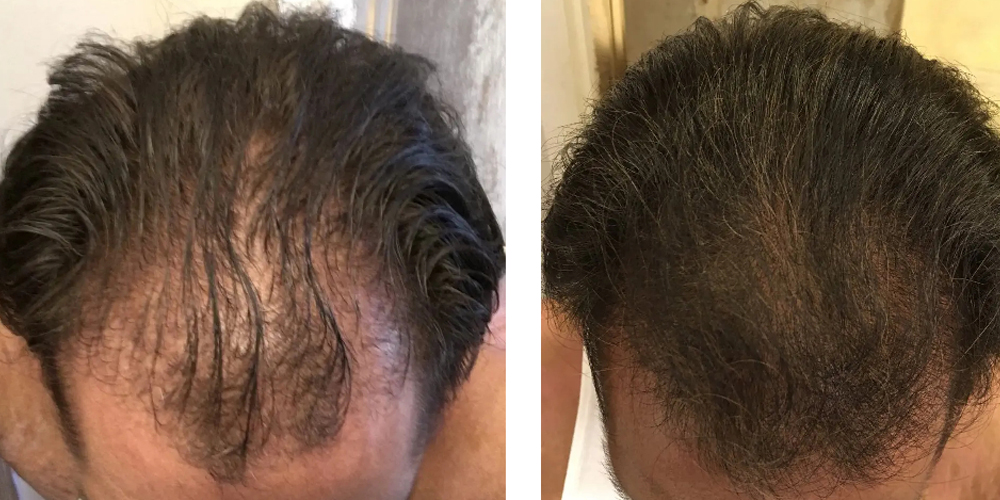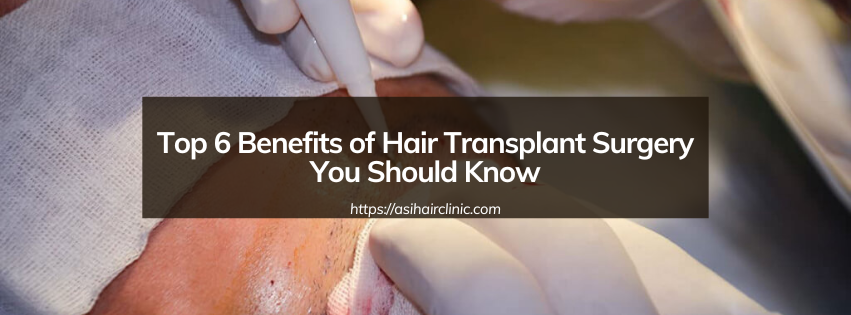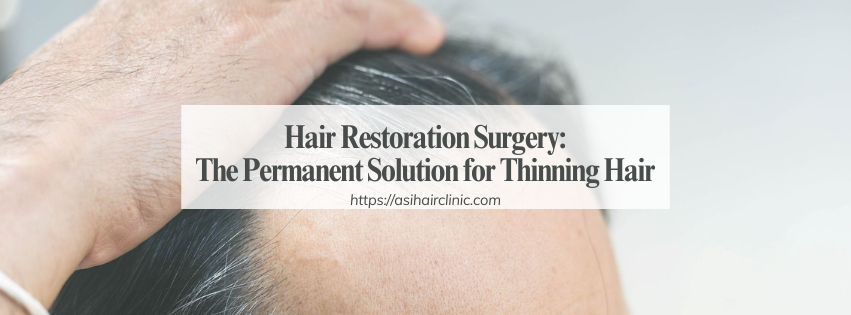Should You Use Finasteride After a Hair Transplant?
After a Hair Transplant, many individuals seek ways to ensure their results last as long as possible. One common medication that comes into the conversation is Finasteride. In this article, we will explore the implications of using Finasteride after undergoing a hair transplant, providing detailed insights into its role, effectiveness, and potential risks.
1. What Is Finasteride?
Finasteride is a medication primarily used to treat benign prostatic hyperplasia (BPH) and male pattern baldness (androgenetic alopecia). It works by inhibiting the action of the enzyme 5-alpha reductase, which converts testosterone into dihydrotestosterone (DHT). DHT is known to shrink hair follicles in those genetically predisposed to male pattern baldness, leading to thinning hair and eventual hair loss.
The relationship between DHT and hair loss is critical for understanding how effective Finasteride can be, particularly for individuals who have undergone hair restoration procedures.
1.1. Mechanism of Action
Finasteride reduces the levels of DHT in the bloodstream, thus preventing further hair loss. This reduction allows existing hair follicles to recover and grow stronger. For many men, just taking this medication can lead to noticeable improvements in hair density and thickness.
In addition to preventing hair loss, Finasteride does not promote new hair growth per se but stabilizes the existing follicles, making it an essential part of a comprehensive hair restoration plan.
1.2. Alternatives to Finasteride
While Finasteride is a popular choice for treating hair loss, there are alternatives available. Minoxidil, for instance, is another widely-used topical medication that can stimulate hair growth. Unlike Finasteride, Minoxidil does not directly affect hormones; instead, it improves blood flow to the hair follicles.
Natural remedies and lifestyle changes also exist, although their efficacy is often debated. Some opt for supplements like biotin, zinc, or omega-3 fatty acids, which are thought to support hair health. However, these options may not provide the same dramatic results as Finasteride or other medical interventions.
1.3. The Importance of Consulting Professionals
Before starting any treatment, including Finasteride, it’s crucial to consult with healthcare professionals specializing in hair restoration. They can assess individual needs and risks, ensuring the selected treatment aligns with personal goals.

2. What Is The Role of Finasteride After a Hair Transplant?
The role of Finasteride after a hair transplant is multifaceted. Many patients consider it a vital part of their post-operative care, as it can significantly influence the longevity and appearance of transplanted hair.
2.1. Supporting Transplanted Hair Growth
One of the primary benefits of taking Finasteride after a hair transplant is its ability to prevent further hair loss. The procedure involves relocating hair follicles from one area of the scalp to another, but if DHT continues to attack surrounding hair follicles, there may still be ongoing hair loss.
By initiating Finasteride therapy post-surgery, patients can create an optimal environment for their new hair to thrive while also protecting existing hair follicles from the damaging effects of DHT. This dual function makes it a valuable ally in maintaining a full head of hair.
2.2. Timing of Administration
The timing of when to start Finasteride can vary depending on individual circumstances. Typically, surgeons recommend commencing treatment shortly after surgery once the initial healing phase has passed. The rationale is straightforward: you want to minimize the chances of losing any remaining native hair while allowing the transplanted follicles to establish themselves.
However, some patients might choose to delay starting Finasteride until they see how their transplant results progress. This decision should always be made in consultation with a qualified professional.
2.3. Long-Term Benefits
Using Finasteride over the long term can result in significant benefits, including increased density and improved hair quality. Consistent use can help maintain the gains achieved through the transplant procedure, allowing patients to enjoy their investment fully.
3. When Should You Start Taking Finasteride?
Determining the right time to start taking Finasteride after a hair transplant can greatly influence results. While some individuals are eager to start the medication immediately, others may have questions about the appropriate timeline.
3.1. Post-Surgery Considerations
Most healthcare professionals suggest waiting for a brief period post-surgery before beginning Finasteride. This waiting period allows for initial healing, reducing the risk of complications or adverse reactions at the surgical site.
Typically, patients may wait anywhere from a few days to a week, depending on their surgeon's recommendations and individual recovery progress. Starting too soon could potentially interfere with the healing process, so patience is key.
3.2. Early Intervention Benefits
Once cleared by a healthcare provider, beginning Finasteride relatively soon after the transplant can be advantageous. The earlier the DHT-blocking effects kick in, the better the chances of preserving native hair alongside newly transplanted follicles.
Early intervention often leads to more satisfactory long-term results, as it creates a protective barrier against future hair loss. This proactive approach ensures that both old and new hair can flourish without the threat of DHT looming large.
3.3. Personalized Recommendations
Ultimately, the decision on when to start taking Finasteride should be grounded in personalized recommendations from a healthcare provider. Factors such as individual health status, extent of hair loss, and specific transplant characteristics will inform the best course of action.
Regular check-ins with a specialist help tailor the treatment plan to each patient's unique needs, ensuring optimal effectiveness in maintaining hair density and overall appearance.

4. Is It Good to Take Finasteride After a Hair Transplant?
The question of whether it's good to take Finasteride after a hair transplant often arises in discussions among patients seeking to enhance their results. The answer, however, may differ based on individual circumstances.
4.1. Efficacy on Transplanted Hair
Research indicates that Finasteride can be highly beneficial for individuals who have undergone hair transplants. By mitigating the effects of DHT, Finasteride helps ensure that newly transplanted hair has the best chance of thriving. Studies show that patients who took Finasteride post-surgery experienced better maintenance of existing hair, contributing to overall hair density.
Moreover, several anecdotal accounts from patients reflect positive experiences with Finasteride usage post-transplant, noting improved hair growth and texture over time.
4.2. Psychological Benefits
Beyond physical improvements, there are psychological benefits tied to taking Finasteride. Many patients feel a sense of confidence knowing they are actively working to protect their hair. The knowledge that they are taking steps to preserve their investment can ease anxiety and enhance overall satisfaction with the transplant results.
This boost in self-esteem may positively impact various facets of life, from social interactions to professional engagements, underscoring the holistic benefits of addressing hair loss concerns.
4.3. Alternative Perspectives
On the other hand, some individuals may not respond well to Finasteride or experience side effects that make its use undesirable. Cases of sexual dysfunction, mood swings, or other unwanted effects can lead some patients to consider alternative methods of managing hair loss.
It’s crucial for patients to remain informed about all available options and to communicate openly with their healthcare providers to find the best path forward.
5. Are There Any Risks of Taking Finasteride After a Hair Transplant?
While Finasteride offers numerous benefits for hair restoration, it also comes with potential risks and side effects. Understanding these risks is essential for making informed decisions regarding post-transplant care.
5.1. Common Side Effects
Finasteride can produce various side effects in some users. Though often considered rare, these include decreased libido, erectile dysfunction, and ejaculation disorders. Such side effects can understandably cause concern for prospective users, prompting some to forego the medication altogether.
It's important to note that while these effects can be bothersome, they are usually reversible upon discontinuation of the drug. However, the fear of experiencing these issues can deter individuals from even trying the medication.
5.2. Psychological Effects
Some studies suggest a potential link between Finasteride and mental health issues, including depression and anxiety. Though the research is inconclusive, it raises valid concerns for individuals already struggling with self-image issues related to hair loss.
Patients should discuss any history of mental health concerns with their healthcare provider to weigh the pros and cons carefully. Open communication can help identify alternative treatments that may be more suitable for individuals sensitive to these risks.
5.3. Individual Variability
The variability in how individuals react to Finasteride underscores the necessity of personalized consultations. Not everyone will experience adverse effects, and many tolerate the medication well, enjoying its benefits without significant drawbacks.
Assessing personal health history, specific hair loss patterns, and individual preferences will aid healthcare providers in crafting tailored treatment plans that minimize risks while optimizing results.

6. When Is Too Late for Finasteride?
Knowing when it might be too late to begin taking Finasteride after a hair transplant can be challenging. Timeframes vary among individuals based on genetic predispositions and the progression of hair loss.
6.1. Proactive vs. Reactive Approaches
Individuals who proactively address their hair loss typically have more favorable outcomes. Starting Finasteride before significant hair loss occurs can yield optimal results; however, for those who decide to initiate treatment later, there may still be benefits.
That said, waiting until hair loss becomes pronounced can lead to less satisfactory results. Once hair follicles have been severely affected by DHT, they may be resistant to recovery.
6.2. Ideal Candidates for Finasteride
Generally, candidates who benefit most from Finasteride are those in the early stages of hair thinning or those looking to maintain the gains from a recent transplant. If the hair loss pattern is established, consultation with a specialist will help determine whether Finasteride is applicable or whether other treatments should be considered.
In some cases, individuals may need to explore advanced solutions beyond medications, such as laser therapy or combination approaches, to achieve desired results.
6.3. Ongoing Consultations
Even if someone believes they are too late for Finasteride, it’s worth speaking with a healthcare provider for guidance. Continuous advancements in hair restoration techniques mean there's often hope for improvement, regardless of the stage of hair loss.
A thorough assessment can reveal individualized treatment options that align with the patient's needs, fostering a comprehensive approach to hair restoration.
7. When Should I Stop Using Finasteride?
Deciding when to stop using Finasteride can be complex. While some individuals find success and prefer to continue indefinitely, others may encounter reasons to discontinue treatment.
7.1. Assessing Effectiveness
Patients should regularly evaluate the effectiveness of Finasteride in their regimen. If the expected results aren’t met within a reasonable timeframe, it may be appropriate to consult a healthcare provider for reassessment.
Discontinuing treatment may be necessary if side effects become unmanageable or if there are no signs of improvement. Open dialogue with healthcare professionals can provide clarity and direction for next steps.
7.2. Personal Health Considerations
Changes in personal health status may also influence the decision to stop using Finasteride. For example, if an individual develops conditions contraindicating the use of the medication, immediate cessation could be required.
Conversely, some individuals may choose to stop due to lifestyle changes, such as achieving desired hair density or transitioning to different treatments that better suit their needs.
7.3. Gradual Discontinuation
When deciding to stop Finasteride, it’s often advisable to do so gradually rather than abruptly. Consulting with a healthcare provider can facilitate an organized plan that minimizes withdrawal symptoms or sudden shifts in hair dynamics.
A well-structured transition allows individuals to monitor hair stability as they navigate alternative treatments or explore other options for hair preservation.
Conclusion
In conclusion, the question of whether to use Finasteride after a hair transplant carries significant weight for many individuals seeking to enhance their hair restoration results. The medication presents valuable benefits, including supporting transplanted hair growth and preventing further loss of existing hair.
Understanding the risks and ideal timing for starting Finasteride is crucial for making informed decisions regarding post-transplant care. While the medication may not be suitable for everyone, its efficacy and potential psychological benefits are compelling. The road to hair restoration is uniquely personal for every individual, and armed with knowledge and guidance, patients can confidently take steps toward achieving their desired results.
LATEST POSTS








